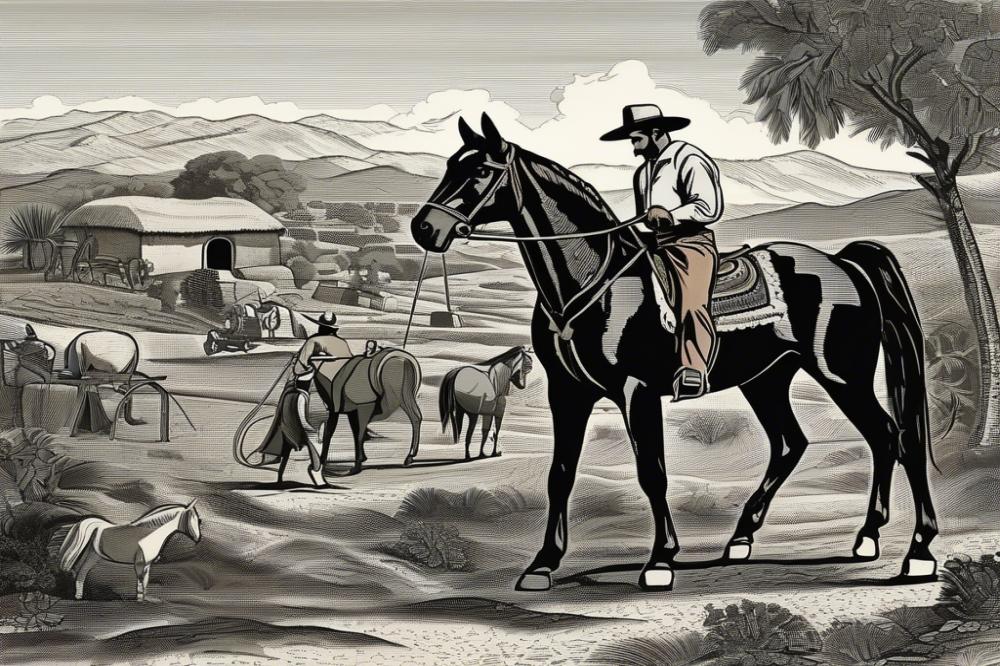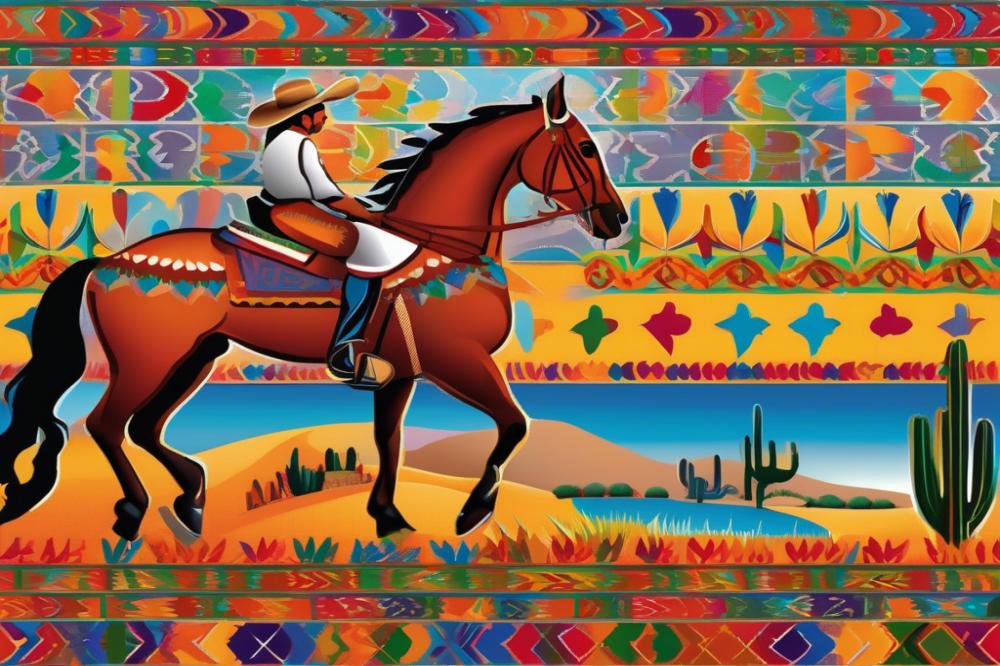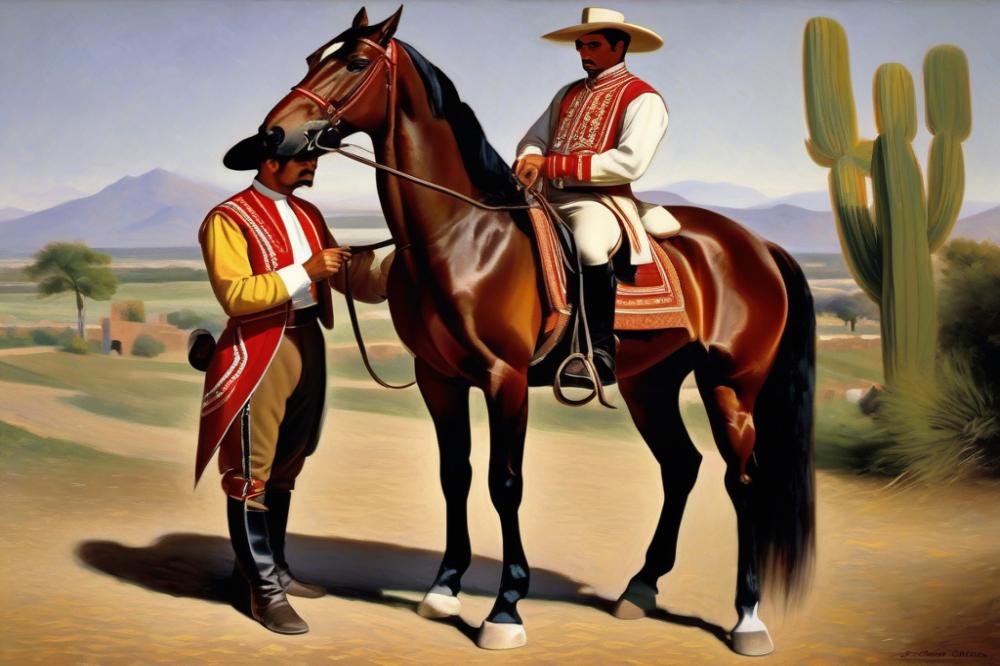shoeing-time-honoured-methods-in-a-cold-climate”>Hoof Care and shoeing in Mexico: The Skills of the Herrador
The health of horses greatly relies on proper Hoof Care. Issues with hooves can lead to serious complications for equines. Strong, healthy hooves support movement and overall well-being. Without proper maintenance, these essential structures can suffer. This presents not only difficulties for the horse but also for the owners and riders involved.
A Herrador, or farrier, plays a critical role in this aspect of equine care. These skilled professionals specialize in trimming and shoeing horse hooves. They combine art and science to ensure that each horse can perform its best. Their expertise helps prevent injury and promotes a long, active life for the animal. Horses depend on their herrador for guidance and treatment. This bond is vital in maintaining the horse’s health.
The traditions of hoof care and shoeing are deeply rooted in Mexican culture. In many regions, the skills of the herrador are passed down through generations. This shared knowledge is respected and valued, reflecting the community’s connection to horses. Many rural areas still rely heavily on these specialists. The way a horse is shod can influence its performance in various equestrian activities. This connection between hoof care and equestrian culture embodies a rich history within Mexico. It showcases the importance of both tradition and skill in maintaining these remarkable animals.
Understanding Hoof Care

Hoof care refers to the practices necessary for maintaining a horse’s hooves. The main purpose is to keep them healthy and functional. Without proper maintenance, hooves can become damaged, leading to serious problems. Regular trimming and care prevent issues, allowing horses to move comfortably.
Trimming is an essential part of maintaining hoof health. Farriers recommend doing this every six to eight weeks. When hooves grow too long, they can cause discomfort and pain for the animal. It’s important to recognize that some horses may need more frequent attention based on their activity and environment.
Proper hoof care has a direct impact on a horse’s overall well-being. Healthy hooves contribute to better performance in work and leisure activities. If a horse has sore hooves, it affects their ability to run, jump, or even walk. Riders and owners must prioritize this care to avoid long-term health issues.
The work of a skilled farrier plays a vital role in achieving these health benefits. Each horse has unique needs, so understanding these nuances makes a difference. A professional farrier can spot early signs of trouble and address them before they escalate. The relationship between horse and farrier is often a collaborative one, focusing on the animal’s comfort and performance.
In addition, educational resources are available for horse owners seeking to learn about hoof maintenance. Workshops and training sessions offer valuable tips on proper care practices. These resources empower individuals to better support their horses between farrier visits. Ultimately, taking an active role in hoof health can lead to happier, more productive horses.
Farrier Skills in Mexico

The role of the herrador, or farrier, is critical in the world of equine care in Mexico. This professional is responsible for the shoeing and hoof maintenance of horses. Their expertise helps prevent lameness and other health issues. A skilled herrador understands the anatomy of a horse’s foot. They possess the knowledge to recognize problems before they become serious. Good farriers are often well-respected in their communities.
Traditional techniques play a big part in their work. Horse owners appreciate the way herradores blend modern techniques with age-old practices. For instance, many still use hand-forged shoes. Creating shoes by hand allows for a tailored fit that machine-made options often lack. This custom approach is essential, especially in rural areas. Herradores use tools like hammers and rasps with a deft hand. Their ability to shape metal and trim hooves shows years of practice.
Maintaining the well-being of horses involves more than just fitting shoes. Herradores inspect hooves for signs of disease or injury. They are often the first line of defense against conditions like thrush or abscesses. Special care is needed for horses that perform in athletic events. Farriers help ensure these animals are in top shape to compete. Their skill set extends beyond traditional shoeing. Learning how to deal with various hoof problems is equally important.
Understanding the cultural significance of horses in Mexico adds another layer to their work. Horses are vital in agriculture, recreation, and sport. Because of this, keeping them healthy can affect entire families. Herradores are not just service providers. They are caretakers of a relationship built on trust between horse and owner. Their assessment and treatments can influence a horse’s performance and longevity.
In conclusion, the skills of herradores go far beyond mere shoeing. They encompass a deep understanding of equine health and welfare. As the bond between horses and humans persists, the role of the herrador will remain essential.
Shoe Types and Selection
Different types of horseshoes are prevalent in Mexico. Steel horseshoes are common due to their durability. Aluminum shoes offer a lighter option, making them popular for performance horses. Some professionals also use plastic shoes for specific conditions. These materials address various needs in equine care.
Several factors influence the choice of shoes for different activities. The horse’s specific role plays a significant part in selection. For instance, jumping horses often use shoes with better grip. Trail riding requires shoes that provide both support and traction. In contrast, horses in flatwork may benefit from more flexible options.
Terrain can also dictate shoe selection. Soft ground often calls for shoes designed for traction. Hard surfaces require different considerations to prevent injuries. Workload is another variable. Horses in heavy training may need more robust support than those enjoying leisurely rides.
Proper shoeing directly affects a horse’s well-being. Well-fitted shoes help distribute weight evenly. This minimizes the risk of hoof-related diseases and injuries. Additionally, shoes protect against environmental wear and tear. Unshoeing or poorly fitted shoes can lead to discomfort and lameness.
Local traditions and practices contribute to shoeing styles in Mexico. Some herradores prioritize traditional methods, emphasizing craftsmanship. Others may lean toward modern innovations, seeking efficiency. Each approach highlights the dedication to equine health and performance. With appropriate training and knowledge, these skilled farriers provide valuable services to horse owners.
Integration with Veterinary Practices
Collaboration between herradores and veterinarians
The relationship between herradores and veterinarians is essential for maintaining equine welfare in Mexico. Herradores are skilled in shoeing and caring for hooves. Their expertise complements the veterinary knowledge of animal health. Together, they work to provide a holistic approach to horse care. Regular communication between these two professionals can help identify ongoing issues more quickly. When a veterinarian examines a horse, their findings can guide the herrador’s work directly. This teamwork leads to better outcomes for the animals.
Role of veterinary assessments in hoof health
Veterinary assessments play a key part in managing hoof issues. Vets diagnose conditions like laminitis or thrush that may arise from poor hoof care. By understanding these medical concerns, herradores can adapt their techniques accordingly. Regular check-ups from veterinarians help monitor overall hoof health. They provide much-needed recommendations for dietary adjustments, which can impact hoof integrity. This insight is invaluable for both the horse’s health and the work of the herrador.
Best practices for integrating hoof care with veterinary care
Integrating hoof care with veterinary practices requires a proactive approach. Keeping open lines of communication is vital. Both professionals should share findings during horse evaluations. It is also prudent to create a care schedule that includes both hoof trimming and vet visits. Additionally, respecting the expertise of each role fosters better collaboration. Educating clients on the significance of this partnership can lead to more informed decisions regarding their horses. In doing so, they enhance the overall health and performance of their beloved animals.
Horse Grooming and Hoof Health
Grooming a horse plays a critical role in maintaining overall hoof health. Regular care helps prevent problems that can affect a horse’s performance. A well-groomed horse shows signs of good health and can perform better in various activities. Attention to detail during grooming can reveal issues that might otherwise go unnoticed.
Daily grooming practices include brushing the coat to remove dirt and debris. This routine helps improve blood circulation, which can benefit the hooves as well. Cleaning the hooves with a hoof pick is essential. This practice removes rocks, mud, and other materials that could cause discomfort or harm. Without regular cleaning, horses may be at risk for developing thrush or other hoof infections.
The connection between grooming habits and the type of shoes used is important for horse owners to understand. Horses that receive proper grooming are less likely to develop hoof problems, making shoeing more effective. In turn, well-fitted shoes enhance performance. Regular attention to a horse’s hooves also offers opportunities to assess the wear on shoes and make necessary adjustments.
Developing these grooming habits can lead to greater overall health for the horse. Owners should consider their grooming routine as part of a comprehensive care plan. A healthier hoof often results in a happier and more active horse, which is the ultimate goal. Always stay attentive to signs of discomfort during grooming, as these can provide valuable insights into hoof condition.
Final Reflections on Hoof Care and the Herrador’s Craft
The importance of hoof care and shoeing in Mexico cannot be overstated. Healthy hooves are crucial for the well-being of a horse, affecting everything from performance to overall health. An experienced herrador plays a vital role in this process. Their specialized skills in hoof trimming and applying shoes are essential for maintaining the horse’s comfort and mobility.
Equestrian culture thrives on the relationship between horses and humans. A skilled herrador not only understands the anatomy of a horse’s foot but also grasps the significance of tradition and technique. They are the unsung heroes of the equestrian world, creating a bond between rider and horse through their meticulous craft.
It is important that horse owners recognize the skill involved in this trade. Promoting awareness of proper hoof care practices can lead to healthier horses and a more vibrant equestrian community. Education is key. Workshops and resources should be made available to those interested in learning more about the art of shoeing and hoof trimming.
Let us appreciate these artisans and support efforts to highlight their skills. The connection between horse and rider hinges on proper care, and the work of the herrador is indispensable. By championing awareness and education in this critical area, we contribute to a better future for our equine companions.



